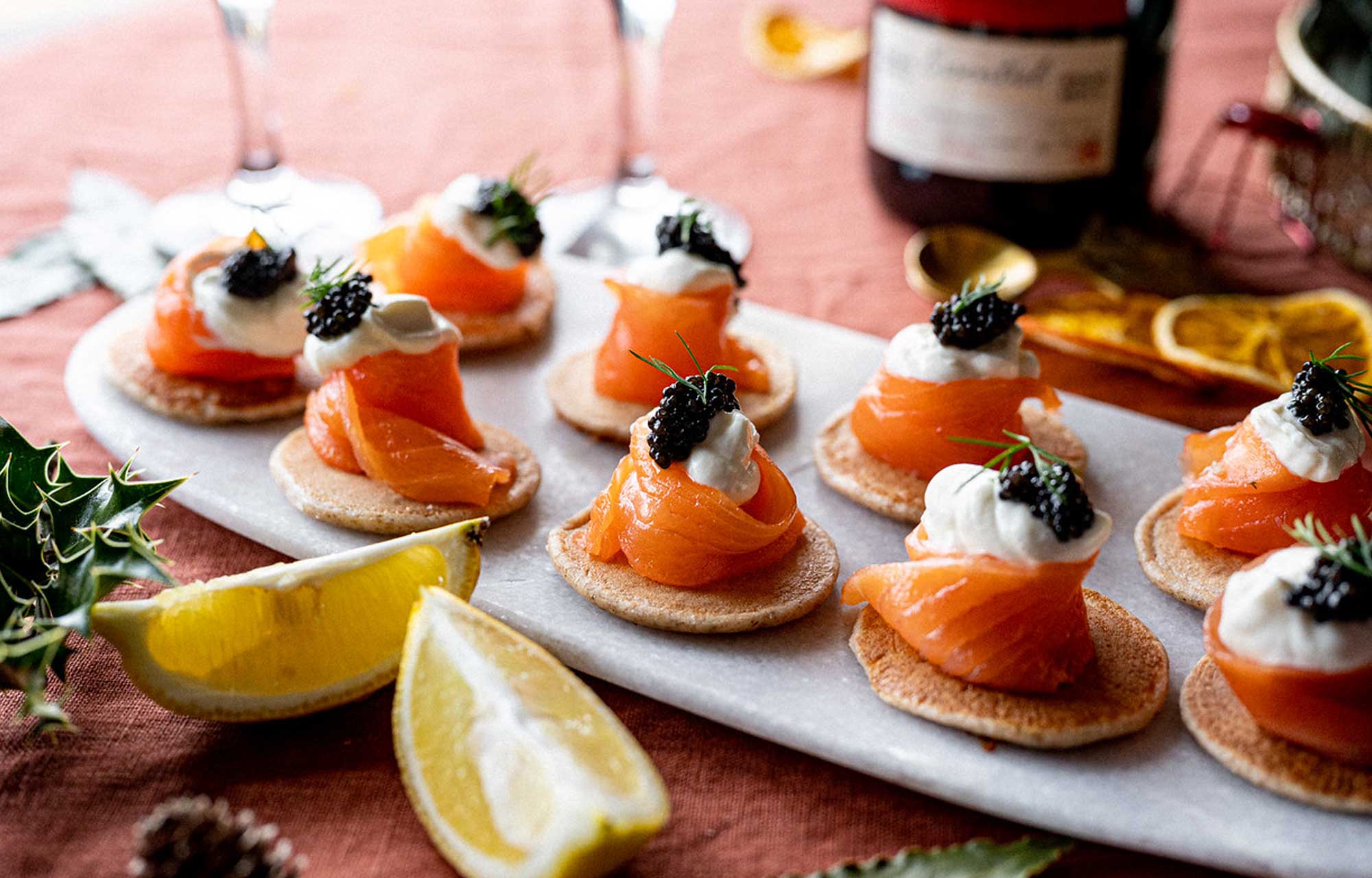List Of Contents
Caviar on blinis represents a culinary tradition steeped in luxury and elegance. Originating from Russia, this exquisite pairing combines the delicate flavors of caviar with the soft, buttery texture of blinis. Caviar, the processed, salted roe of sturgeon or other varieties of fish, is celebrated for its unique taste and texture, making it one of the most prized delicacies in the gourmet food world. Served on warm blinis, caviar transitions from a simple indulgence to a sophisticated dish that has been savored in Russian cuisine for centuries. This article delves into the history, preparation, and serving suggestions of this iconic duo, offering a comprehensive guide to enjoying one of the world’s most luxurious food pairings.
Historical Roots and Cultural Significance
:max_bytes(150000):strip_icc()/__opt__aboutcom__coeus__resources__content_migration__serious_eats__seriouseats.com__2018__12__20181204-blini-vicky-wasik-68-82b29dacabd2465a94db01c46c9777fa.jpg)
Caviar on blinis has long been associated with wealth and aristocracy, particularly in Russia, where it was traditionally harvested from the Caspian Sea. The custom of serving caviar atop blinis is deeply rooted in Russian tradition, with blinis symbolizing the sun due to their round and golden appearance. Historically, blinis were prepared at the end of winter to honor the rebirth of the new sun, making this dish not only a culinary delight but also a cultural celebration.
Making the Perfect Blinis
Blinis are small, thin pancakes traditionally made from buckwheat flour, which gives them a distinctive, nutty flavor that complements the saltiness of caviar. Here’s how to make them:
- Ingredients: To prepare blinis, you will need buckwheat flour, all-purpose flour, milk, yeast, sugar, salt, eggs, and butter.
- Preparation: Start by mixing the flours with warm milk, yeast, and sugar, allowing the mixture to rise. Incorporate the egg yolks, melted butter, and a pinch of salt, then gently fold in stiffly beaten egg whites to give the batter lightness.
- Cooking: Pour small amounts of the batter onto a hot, buttered skillet, cooking each blini until the surface bubbles and the edges are dry. Flip to cook the other side until golden brown.
Selecting and Serving Caviar on blinis
Choosing the right caviar is crucial for achieving the perfect balance of flavors. Here are some tips:
- Types of Caviar: Beluga, Ossetra, and Sevruga caviars are among the most prestigious varieties. Each type offers a different size, color, and flavor profile, from the creamy, mild Beluga to the smaller, more intensely flavored Sevruga.
- Quality and Freshness: Look for caviar that is fresh and has a clean, slightly briny smell. It should be shiny and intact, without any fishy odor.
- Serving: Serve the caviar chilled, using a non-metallic spoon, such as one made of mother of pearl or plastic, to avoid altering the taste. A small dollop of caviar should be placed atop each blini.
Caviar on blinis: Accompaniments and Pairings
To enhance the flavors of caviar on blinis, serve with:
- Creamy Toppings: A dollop of sour cream or crème fraîche can be added to the blinis before topping with caviar to add richness.
- Garnishes: Traditional garnishes include chopped hard-boiled eggs, minced onion, chives, or parsley, which complement the flavors without overpowering the caviar.
- Beverage Pairings: A classic pairing for caviar is chilled vodka or Champagne, which cleanse the palate between bites with their crisp, subtle flavors.
Conclusion: Indulging in a Luxurious Tradition of Caviar on blinis
Caviar on blinis is more than just a dish; it is an experience, a celebration of luxury and tradition that continues to captivate food enthusiasts around the world. Whether served at a sophisticated gathering or enjoyed as a special treat, this pairing remains a timeless symbol of culinary elegance. By following these guidelines, you can savor the authentic angkabet taste of Russian heritage and indulge in one of the gastronomy world’s most luxurious offerings.

